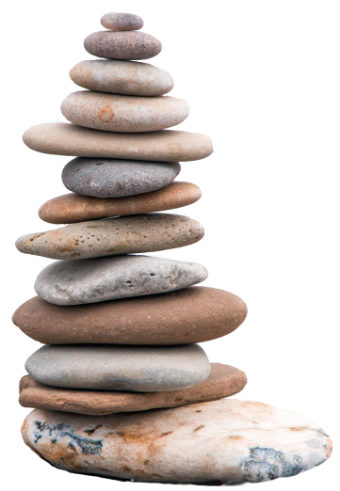Back in college, I was often told that I had “good boundaries.” At the time, I didn’t quite know what it meant, but it sounded positive so I would smile and say thank you. It was not until I was a little older that I began to recognize what those people were talking about and really appreciate the compliments. I also started to recognize boundaries all around me, whether it was people lacking in them but seemed to want them or people that had appropriate boundaries and I could see how it seemed to affect their lives and happiness. People who asserted themselves seemed to be happier. I began to work on having even better boundaries.
This article is an overview on relationships with your child. However, it can relate to your relationships with your spouses, friends, and coworkers as well. I am going to be going over what good or appropriate boundaries look like, what good can come from them, and how to set good boundaries for yourself and with your kiddos, and how to help your child create good boundaries for themselves. So let’s begin!
What do Good/Appropriate Boundaries Look Like?
Boundaries can relate to the space around you such as physical touching and words. When a parent lets their child know when it is okay to crawl all over them, touch them, or be in their space, the parent is exerting a good physical boundary. You are in charge of your space and your body, as your child is in charge of theirs. For example, it is not uncommon for a child to be encouraged or even forced to hug a person whether it be a grandma or a teacher. If your child expresses resistance; verbalize options such as “Would you like to hug your grandma?” And if they say “No”, saying “That is your choice. Would you like to high five her?” If still no, then a wave might be acceptable.
When a parent stops a child from yelling or cursing, that parent is exerting a healthy boundary. The parent should say this in a calm manner not blaming the child for his/her feelings. Stay away from “Because you…”, when there is a hard feeling such as frustration, anger, sadness, or feeling ignored; these feelings are said out loud in the moment. The unknown is known and when something is wrong it is said out loud and not bottled.
What Good Can Come From Having Good Boundaries?
Many good things come about, but the #1 thing is likely to be a trusting and honest relationship. Also more open conversations, more listening and understanding. A child will more likely say “no” when faced with a precarious situation. There will typically be more mutual respect in the relationship. Your child will be learning how to positively and assertively interact with peers and other people in their lives with an increase in self-confidence and self-esteem. Your child has been validated and has a voice.
How to Set Good Boundaries For Yourself With Your Child
Validate your child’s feelings and when necessary set limits allowing them to have them, especially the hard ones, i.e. anger, embarassment, sadness, rejection, or frustration to name a few.
Validation can look like stating, “You seem angry. I know you are frustrated. It’s hard feeling sad.”
When necessary, if there is verbal or physical abuse occurring, set a limit. For example, your child is angry and hits his brother it could sound like, “I know you are frustrated, (stated the feeling) but it is not okay to hit your brother.” (Stating what behavior is not acceptable). “You may go hit that cushion,” (provided an acceptable alternative). Another example of setting a limit is “I know you are lonely (feeling), but it is not okay to follow me around in the kitchen while I make dinner” (unacceptable behavior). “You may go color at the table or play with your cars right outside the kitchen” (alternative choices). You may have noticed the last example had a choice for acceptable behavior. We all like to be in control of our lives and choices help us to feel more in control. Children are people just like adults. Provide choices as you can, whether big ones, (park or pool?), or small one, (blue plate or red plate?). Your child knows when you are upset so be honest without blaming. Own your feelings, validate your child feelings, and model self care. Be mindful to not offer too many choices especially when your child is upset or seems overwhelmed.
How to Help Your Child Create Good Boundaries For Themselves
Your child is always watching you and soaking it in even when it does not appear so. Model for them appropriate boundaries in all environments. Be assertive and open. Talk to your child about what to do if a person is in their space and they are uncomfortable, or if someone is being rude and how they can stand up for themselves. If needed, tell them in the moment so they are learning while experiencing. Listen to them.
This was a brief overview of what good boundaries are and how to create them with yourself and how to help your child do so. I hope that you feel at least a little more prepared with setting good boundaries with your child and with life in general, helping your child do the same.
Published in Boulder Kids Newsletter Fall 2016
